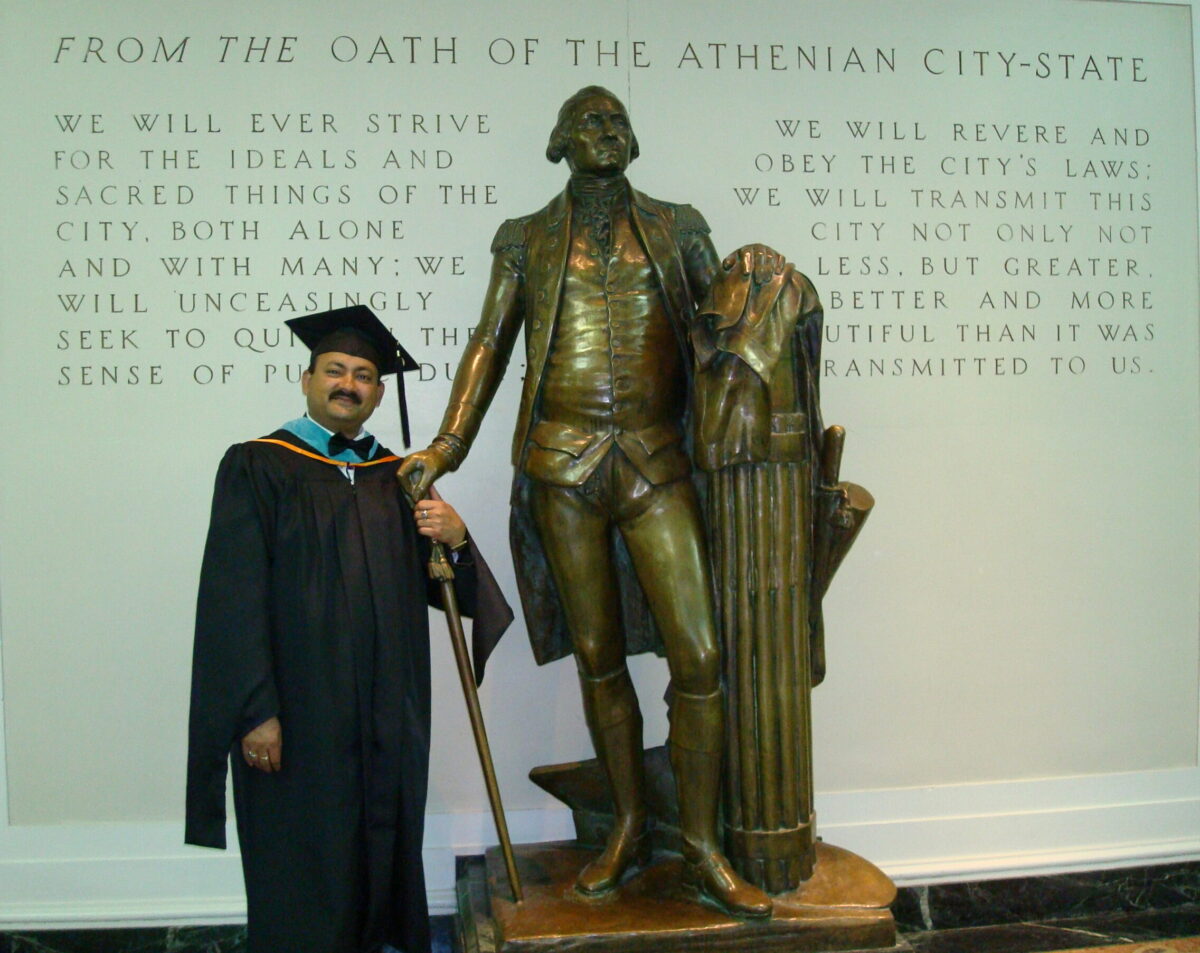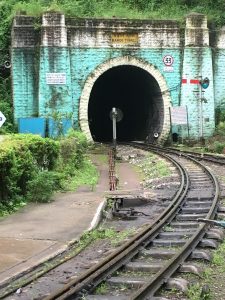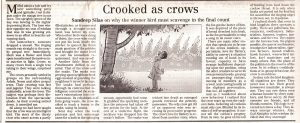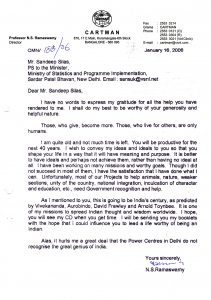Travelling on the dusty road once you leave the Bikaner Highway towards Gajner Palace, meeting simple villagers, finding broken bullock carts, watching hand painted sign boards, you really don’t believe that you are actually on way to some oasis palace amidst the Thar Desert. The road is unassuming, till you come to see a bright red gate leading you inside to an impressive monumental building. This is the Gajner Palace, now a Hotel.

What was private is now public, what was hidden is now open, what was unapproachable is now yours for the taking!

Gajner Palace was built by the then Maharajah of Bikaner Ganga Singh as a personal hunting lodge. Those were the days when Maharajahs could afford such luxuries at the cost of the royal exchequer. He ruled Bikaner from 1887 to 1943 and it was during his reign that Gajner palace hunting lodge was built to be later converted in 1976 into a Hotel.

6000 acres of the once called Jangladesh is now a beautiful Palace ground and palace structure on the banks of Lake Gajner. The Britishers were known to enjoy a lavish lifestyle at the cost of the then Maharajahs, eventually passing on the cost to the subjects of these numerous Kingdoms. So, it was but natural that these Kings who had accepted the suzerainty of the British play gracious host to the Viceroys, Generals and other Officers of the Crown! It attracted several British dignitaries, including the Prince of Wales in 1905, Governor General Lord Elgin, Lord Erwin in 1927 and Lord Mountbatten when he was Viceroy of India.

After alighting at the steps I heard a peacock call and that reminded me that peacocks are a plenty in Bikaner and the call added immediate pleasantness to the environment. The reception was welcoming and displayed photographs of the Maharajahs and Maharanis of Bikaner, who have now passed into history and only rule from their adobe in framed photographs hung on the walls.
One black & white photograph of a Princess was particularly appealing.


Stepping inside was a treat for a fan of architecture and a student of history. The centre courtyard had ornamental buildings to its three sides, the one in front being the Dungar Niwas. You can inhale the mystifying fragrance of tiny, white flowers of the maulsari trees (mimusopse elongii), which stand at the four corners of the courtyard. The tree flowers in the night!


It was here, at Dungar Niwas, that the British rulers stayed, occupying the 13-suites overlooking the Lake Gajner, enjoying the rise of the Sun and its setting, though they believed that the Sun never sets in the British Empire!
The originality of the suites bears the stamp of royalty and of an era that is lost into oblivion. Not to worry, you won’t have to pee and poo the jungle style because all rooms are absolutely modern and air-conditioned.



The other wings of the Palace are Mandir Chowk to the right of the Courtyard where a temple is built on the banks of the Lake, Gulab Niwas and Champa Niwas.


The trunk of the Banyan tree at the Mandir Chowk is so huge that one wonders about the age of the tree. It is clear it existed much before the palace structure was even conceived. It is said that the 32 deluxe rooms in Gulab Niwas were used by the glamorous railway officers of times bygone as a railway line was connected to the Palace in 1922.

Champa Niwas is a new section, recently built with a beautiful garden courtyard surrounded by rooms.

The Imperial Sand Grouse shoot at Gajner Palace during the Christmas season was the most sought after invitation in the Indian social calendar.


(The two Sand Grouse photographs from the Internet)
The Maharajahs and the British colonists knew how to enjoy life and not waste their time into unnecessary things, save those that suited their interests.
You can peep into the life of those times, as you look at the photographs of the British lifestyle, displayed in the corridors and staircases of Gajner!



The food place is the Mirage restaurant serving all cuisines, but when in Rajasthan eat like a Rajasthani! In front of the Mirage restaurant is the Imperial Terrace, which serves as a open air cushioned arena for many a cultural concert, with drinks and snacks.


You can also request for food to be served in Rajasthani Thalis at the Imperial Terrace and eat watching the colours of the sky and the lake waters!
Julie Elaine Hughes, a researcher has done a wonderful dissertation, presented to the Faculty of the Graduate School of The University of Texas at Austin, about the animal shoots in Princely India— Animal Kingdoms: Princely Power, the Environment, and the Hunt in Colonial India; 2009. She writes (quote):
“Ganga Singh greatly admired his state’s wildfowl and, because his status as a sportsman was linked to the perceived quality of his primary game, he wanted outsiders to do so as well. According to the maharaja, the imperial sandgrouse was a superior game bird capable of giving “capital shots and sport.”12 He insisted that a great deal of skill and steady aim were required to down the birds because sportsmen had to shoot them precisely in the head or breast.13 In addition, the flight of the imperial sandgrouse was vigorous and “much faster” than it appeared.14 Apparently enamored of aeronautical references, Britain’s Secretary of State for Air in the 1920s likened the speed of Bikaner’s sandgrouse to “torpedo-carrying bombers.”15 Even Lord Curzon opined that their movement was “quite unlike that of any other bird, and…not in the least [like] that of a grouse.”16 Some of Bikaner’s other wildfowl were similarly challenging. Like imperial sandgrouse, Ganga Singh described demoiselle crane (kūñj) as strong, fast, and hard to bring down.17
(Animal Kingdoms: Princely Power, the Environment, and the Hunt in Colonial India; Julie Elaine Hughes 2009; pg 126)
Further, Julie mentions an anecdote about Maharajah Ganga Singh’s shooting style, as described by Viceroy Lord Linlithgow:
“Such vehicular sport gratified British VIPs who shot in Bikaner by giving them a flattering story to relate about their personal triumphs in the field. The experience often left them impressed with their host’s prowess too. Describing the blackbuck hunting that he enjoyed in 1937 along with Ganga Singh in the prince’s “high-powered car,” the Viceroy Lord Linlithgow wrote that [w]hen a blackbuck appears [the maharaja] stamps on the accelerator, takes both hands off the steering wheel and opens fire at the animal with his rifle. It is interesting to speculate as to whether or not he will resume control of the vehicle before it disappears into a thorn thicket at 40 m.p.h. [miles per hour].45 Even as Lord Linlithgow expressed admiration for the sport, he framed the interludes he experienced as comic amusements.46
(Animal Kingdoms: Princely Power, the Environment, and the Hunt in Colonial India; Julie Elaine Hughes 2009; Page 133)
I would like to quote from Mahesh Rangarajan’s book, which mentions about the shooting skills of one of the Maharajah’s of Bikaner:
“THE Big Game Diary of Sadul Singh, Maharajkumar of Bikaner, privately printed in 1936, catalogued his bags over a quarter of a century. In this time, he had ranged far beyond the confines of his desert kingdom in western Rajasthan to shoot tigers in the forested hills of central India, lions in the dry teak jungle of Saurashtra, leopards in Bharatpur and wild buffalo in the Nepal tarai. The rarer a creature, the greater the sense of exultation of the big game hunter.
Thus it was that on a March morning in 1920, Sadul Singh’s father grew taut with excitement when trackers brought news of a male wild buffalo that they had seen mingling with a tame herd. The party of hunters had travelled all the way to Babia-Bankuwala in Nepal to get a fine head of the great arna, a creature already so rare across north India that the British had restricted its killing for sport. As they waited in a macchan, a platform on a tree at the edge of a plain, Sadul Singh recalled how, “Father got very excited as it was his first experience of this kind, even though he is an experienced sportsman. He said his heart was thumping as in his early sporting days.” Five years later, the same hunters gave the coup de grace to a group of three cheetahs in Rewa, a princely kingdom in central India. The cheetahs, shot from a motor vehicle, were so rare that their shooting was described as “a great piece of luck”.
The Diary is a priceless document because it totals all that Sadul Singh shot over a quarter century. Nearly 50,000 head of animals and a further 46,000 game birds fell to his gun. Among these were 33 tigers, 30 Great Indian Bustards, over 21,000 sand grouse and a lone Asiatic lion. To cap it all, over a thousand of the game animals had been bagged outside India. The Cape buffalo and the black rhino were among the 33 varieties of herbivores of the savannah and jungle of Africa that ended up as trophies in the Bikaner palace”.
(India’s Wildlife History: An Introduction, Mahesh Rangarajan, Permanent Black, p.160.)

Sounding a little weird but, nevertheless to mention is a recipe from Rajasthan, of the Kings of those days. I quote:
“Take a whole camel, put a goat inside it and inside the goat, a peacock, inside which put a chicken. Inside the chicken put a sand grouse, inside the sand grouse put a quail and finally, a sparrow. Then put the camel in a hole in the ground and steam it…”
(http://indiatoday.intoday.in/story/a-kings-feast/1/139409.html)

(The Hunt)
This is all what was done by the Maharajahs! The question arises what you can do now? Well, well, you can take Nature walks, do yoga in the morning by the Lake, watch enamouring sunrise and sunsets, go for camel safari, walk hand in hand with your loved one in the palace grounds, kiss her at the Billiards Table, host a lavish Rajasthani dinner along with a cultural performance at the Imperial Terrace, in front of the Mirage restaurant.

And if you are not married as yet, why don’t you decide to tie the nuptial knot at the Gajner Palace, truly Rajasthani royal style and discover each other under the shadow of history in the splendor of Gajner.
Gajner not only surprised me, giving me a royal dip in its past, but also a lesson that past times can still beautify the present times!
Distances from major cities:
Jaipur 331 km; New Delhi 448 km; Jodhpur 251 km; Mumbai 1255 km
From Bikaner city it is 30 minutes by car
Airport: Currently Jaipur, but small planes are likly to commence flying to Bikaner in the coming months.
Please follow and like us:



















































































































